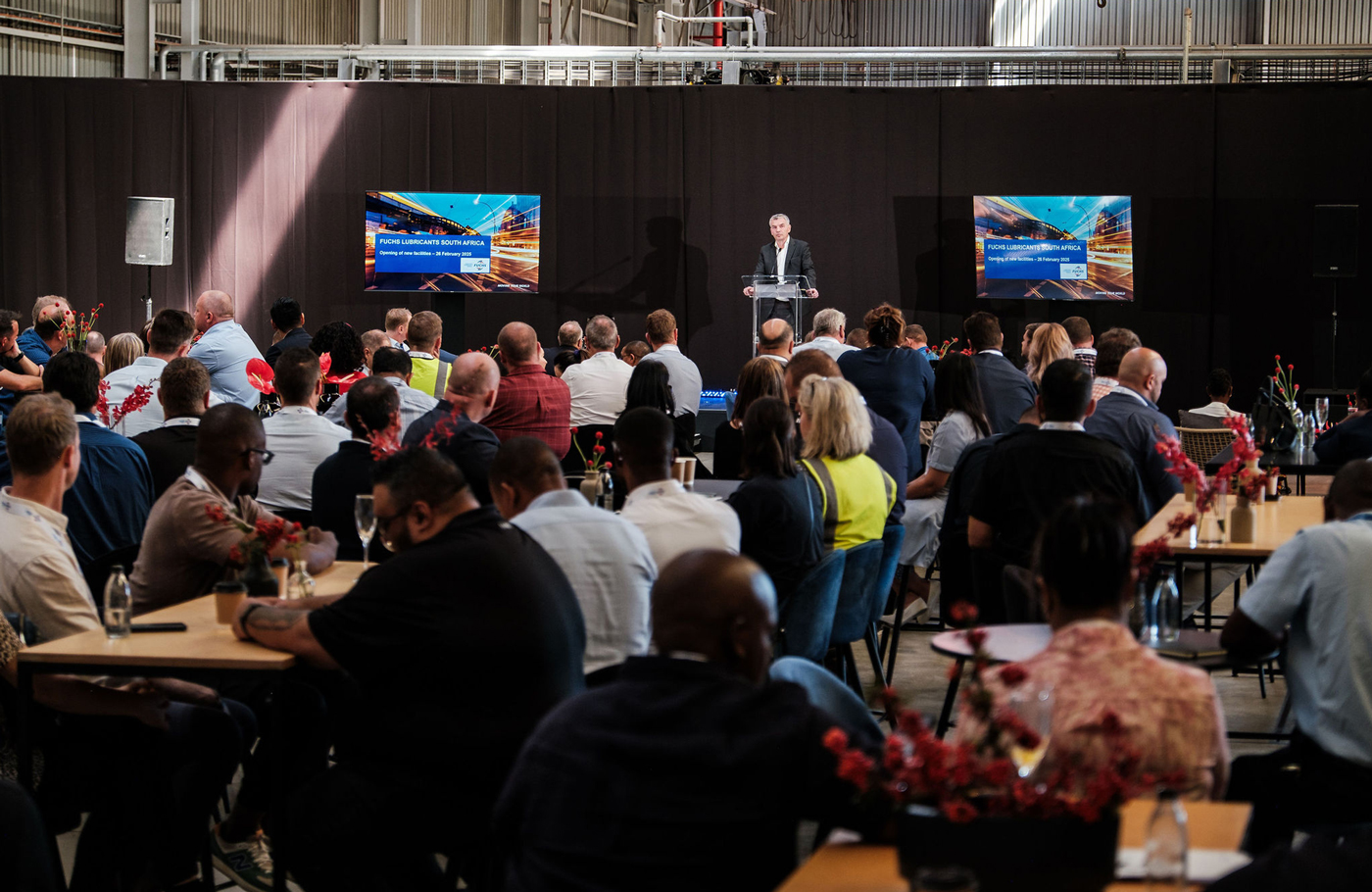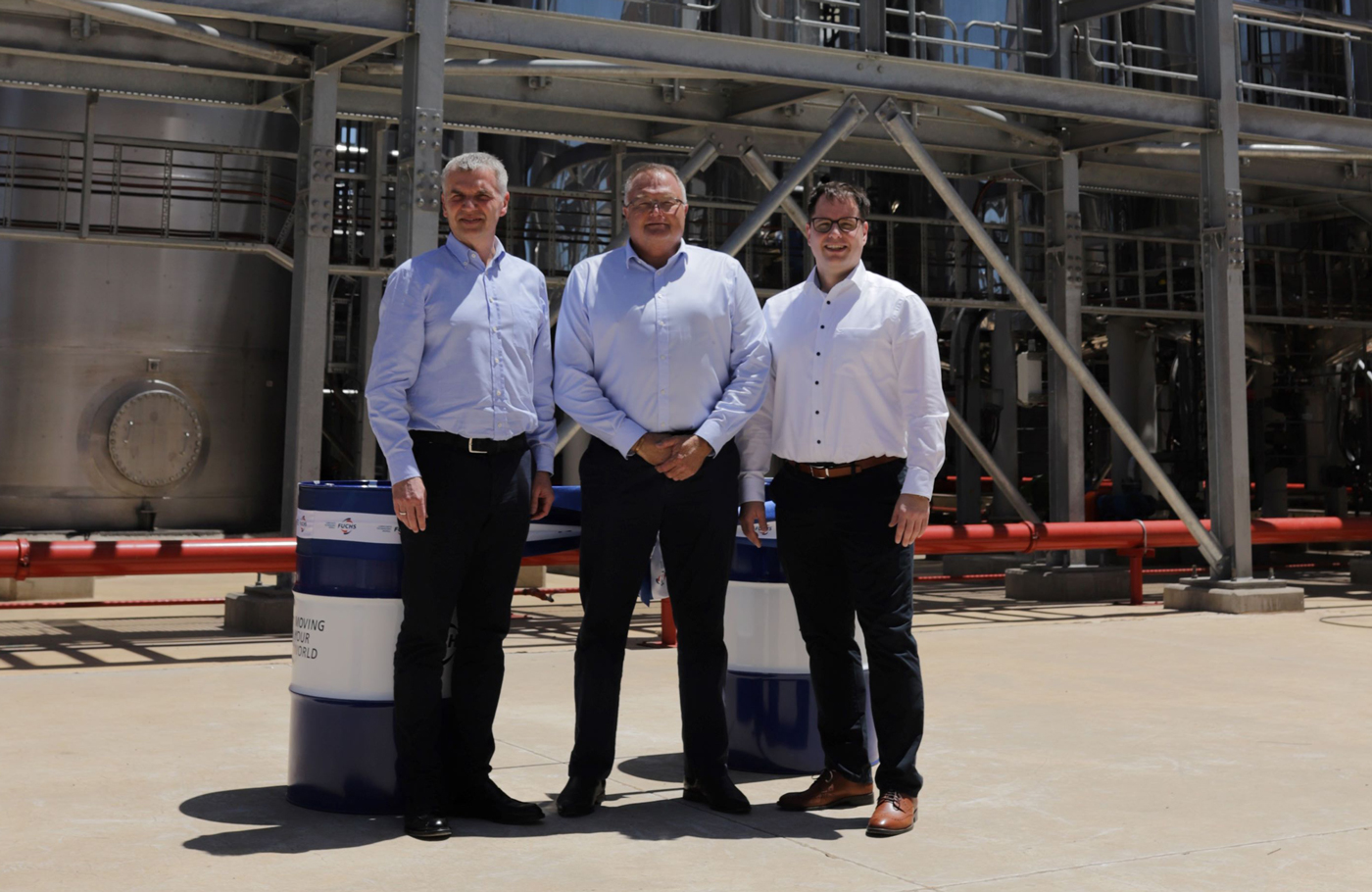FUCHS invests R500 million in its future
FUCHS invests R500 million in its future
In a strategic move to solidify its footprint across Sub-Saharan Africa, FUCHS Lubricants South Africa has unveiled a R500-million expansion of its Isando manufacturing facility in Johannesburg. COLIN WINDELL reports that the expansion marks a critical step in its decade-long growth strategy.
The development, officially opened at the end of February 2025, underscores the company’s dual focus on scaling production capabilities and embedding sustainability into its operations.
Since 2015, FUCHS Lubricants South Africa has recorded a compound annual growth rate (CAGR) of 6% in sales volume, nearly doubling its output. Managing director Paul Deppe attributes this success to sustained investment from parent company FUCHS SE, which has injected R650 million into local operations since 2016.
“This expansion is a testament to the group’s confidence in South Africa’s market potential,” Deppe said at the opening ceremony. “Without this commitment, our growth – and the jobs it supports – would not have been possible.”
The newly expanded site, now spanning six hectares, follows initial investment in a grease plant in 2018 and the acquisition of adjacent land in 2020. The latest phase, completed in December 2024, increases production capacity by 40% and introduces advanced automation, positioning the facility to meet rising demand across mining, agriculture, industrial, off-highway, and automotive sectors in the region.
Central to the upgrade is a net-zero-carbon office complex, certified by the Green Building Council of South Africa. The building houses 110 employees and integrates solar panels, rainwater harvesting, and energy-efficient systems, aligning with FUCHS SE’s global target to achieve net-zero emissions by 2050.
“Sustainability isn’t an add-on; it’s woven into every aspect of this facility,” emphasised Dr Ralph Rheinboldt, chairperson of FUCHS Lubricants South Africa and executive board member for EMEA at FUCHS SE.
Adjacent to the offices, a 7,000-m² warehouse, four-and-a-half times larger than its predecessor, utilises vertical storage solutions to maximise space. The structure incorporates narrow and wide aisle racking, SAP-driven inventory management, and automated fire suppression systems compliant with National Fire Protection Association standards. Solar panels on the roof will increase green energy supply to 30% once installation is complete later this year.




The production area features three automated filling lines for drums, intermediate bulk containers, 20-litre containers, and small packs (one to five litres), each equipped with weight sensors, vision systems, and other features to minimise errors. A new tank farm with 1,300m³ of base oil storage and 300m³ of blending capacity supports increased output, while insulated tanks and variable-speed drives reduce energy waste. The upgraded laboratory, critical for quality control and R&D, now includes pilot-scale grease reactors to improve product development.
“Our ability to test and scale innovations locally ensures we meet customer needs faster,” said Dr Sebastian Heiner, FUCHS SE’s chief technology officer, at the ceremony.
The project involved 20 engineering and construction partners, including engineering, procurement, and construction management consultant DRA Global and architecture firm GPD Studio. FUCHS maintained its workforce throughout the expansion, growing employee numbers from 250 in 2015 to nearly 450 today. Training programmes in automation and sustainability practices were prioritised, reflecting the company’s emphasis on skills development.
Matthias Spethmann, FUCHS SE’s vice president of EMEA OEM Sales, noted the facility’s role in strengthening regional supply chains: “Local production reduces lead times and logistics costs for clients in Sub-Saharan Africa, giving us a competitive edge.”
While the expansion addresses immediate capacity needs, FUCHS has future-proofed the site with modular infrastructure. The tank farm and blending plant are designed for further scalability, and the warehouse’s firewalls and spill barriers set new benchmarks for industrial safety in South Africa.
Deppe reiterated the company’s broader vision, saying: “Our motto, ‘Moving your world’, isn’t just about lubricants. It’s about advancing economies responsibly. South Africa represents 7% of our global workforce, and we are committed to its economic growth.”
With the Isando facility now operational, FUCHS aims to utilise its increased production capacity and advanced technology to expand into emerging markets in Sub-Saharan Africa, where demand for lubricants is growing. The expansion not only cements FUCHS’ regional dominance but also sets a blueprint for industrial projects seeking to balance scale with environmental stewardship.
From the dusty mines of the Highveld to the bustling automotive hubs of Gauteng, FUCHS’ German-engineered solutions are recognised for their durability and efficiency.
Legacy of growth and innovation
FUCHS’ South African journey began in 1984, when the family-owned German enterprise recognised the potential of a nation rich in minerals and industrial development. Over the next eight years, FUCHS acquired and merged several lubricants companies into what became known as FUCHS Lubricants South Africa in 1992. As international sanctions lifted, the company positioned itself as an enabler of industrial growth supplying lubricants into the mining, industrial, and automotive markets.
Today, FUCHS Lubricants South Africa operates state-of-the-art facilities in Johannesburg, producing millions of litres of lubricants annually. In the mining sector, high-performance oils and greases are engineered, coupled with biodegradable lubricants for sensitive ecosystems. Greases and oils protect tractors and harvesters in the agricultural sector. Engine and transmission oils in the automotive sector meet many OEM specifications and satisfy the demand of long-distance operators, while specialist lubricants for renewables are used, for example, in wind turbines along the gusty Eastern Cape coastline.
Published by
Focus on Transport
focusmagsa




